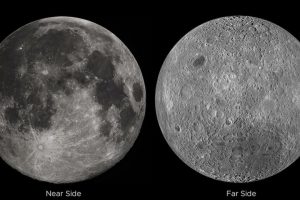
Tauseef Khan, Canada
We look up and see our nearest celestial neighbour, the Moon. We ask ourselves; what is there, can we go there and how can we study it? The Moon’s proximity enables us to send probes to collect samples repeatedly for a clearer picture of how the solar system was formed. Future manned missions can explore viability of longer stays for research and exploration. Eventually, the Moon can become a stepping-stone for long-haul missions to the rest of the solar system.
The most essential ingredient for any long-term staffed mission to the Moon depends upon our access to water. Taking water from Earth would be prohibitive, so we would need to find water on the Moon. The good news is we have found water there — also known as lunar water.
Discovery of Water on the Moon
Water molecules were first found in rocks from the Moon brought back in 1976 but scientists were not sure if it was lunar water or a contaminant in the instruments used. However, subsequent scientific missions confirmed the presence of lunar water. In 2009, the Indian Chandrayaan-1 probe confirmed the presence of water ice on the Moon when it sent an impact probe in the Shackleton crater. Afterwards, many scientific missions including NASA SOFIA Observatory here on Earth, remotely detected molecular water on the surface of the moon. However, none of the missions sampled the soil of the Moon, until now.
China’s Chang’e 5 lunar lander detected the presence of water at its landing site in real time — the first lander to do so on the surface. In a recent publication the scientists reported that using onboard scientific instruments, the lander found the amount of water on the surface of the Moon to be around 120 parts per million — which is 100 times drier than the Sahara desert. Another distinction of the Chang’e 5 is that it was the first mission since 1976 to bring back samples from the Moon. This made China only the third country after USA and Russia to bring lunar samples back to Earth.
The next few missions by China and USA will explore the other areas of the Moon for water, as it is likely that large amounts of water are present as ice, in deep craters in the permanently shadowed parts of the Moon. These missions will also study the cause of water on the Moon. The current understanding of formation of lunar water are ice-laden comets that strike the Moon and solar wind which can chemically combine oxygen atoms in lunar minerals to produce water.
Why is Lunar Water Important?
We know that water is the chemical of life and essential for sustaining it. It acts as a solvent, enables chemical reactions, maintains cellular structure, and flushes out waste products for living creatures. It has played an essential role in the evolution of life on Earth and as such, in our understanding, life anywhere without water is untenable.
Water is the Source of Life
This scientific fact was presented clearly by the Holy Qur’an 1400 years ago:
وَ جَعَلۡنَا مِنَ الۡمَآءِ کُلَّ شَیۡءٍ حَیٍّ
‘And We made from water every living thing.‘ [21:31]
This verse profoundly states that life not only originates due to water, but also requires water to survive. While, we might not have found aliens on the Moon, the long-term ability of humans to live and study the Moon depends upon lunar water. This water can provide a potentially unlimited supply of essential oxygen for breathing, water for drinking and can also be used for energy by splitting water into hydrogen and oxygen — thus making a lunar base far more practical.
About the Author: Tauseef Khan is a Research Associate at University of Toronto and serves as the Science Section Editor for the Review of Religions.




Add Comment